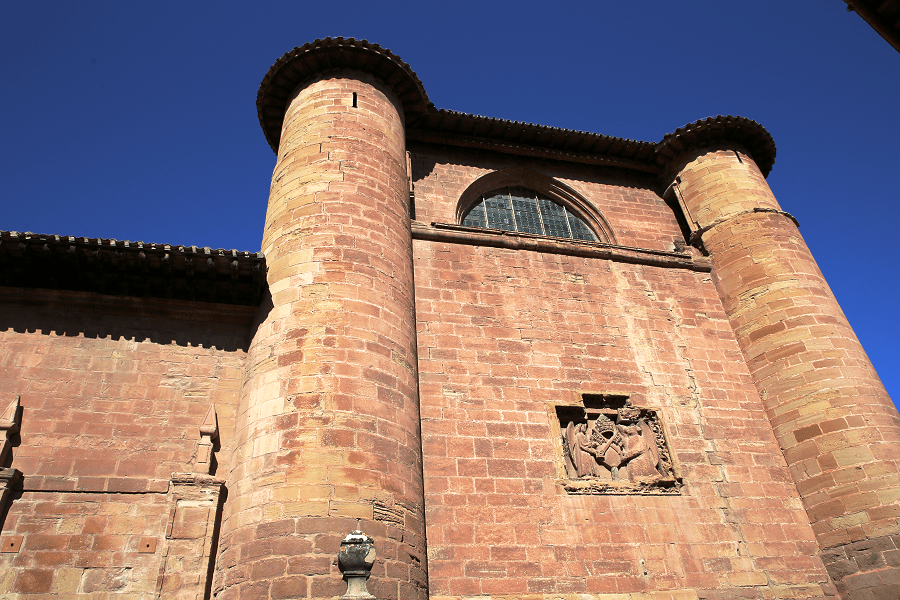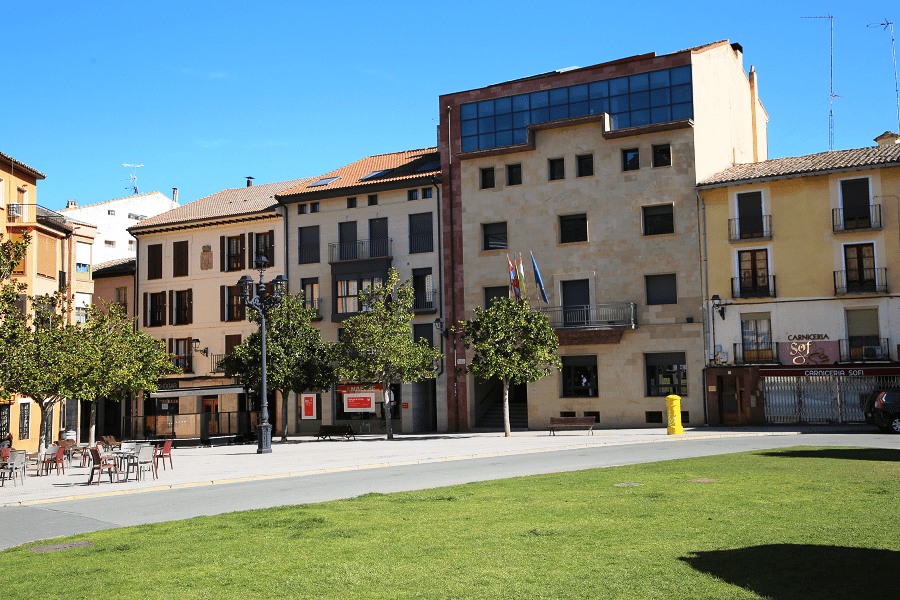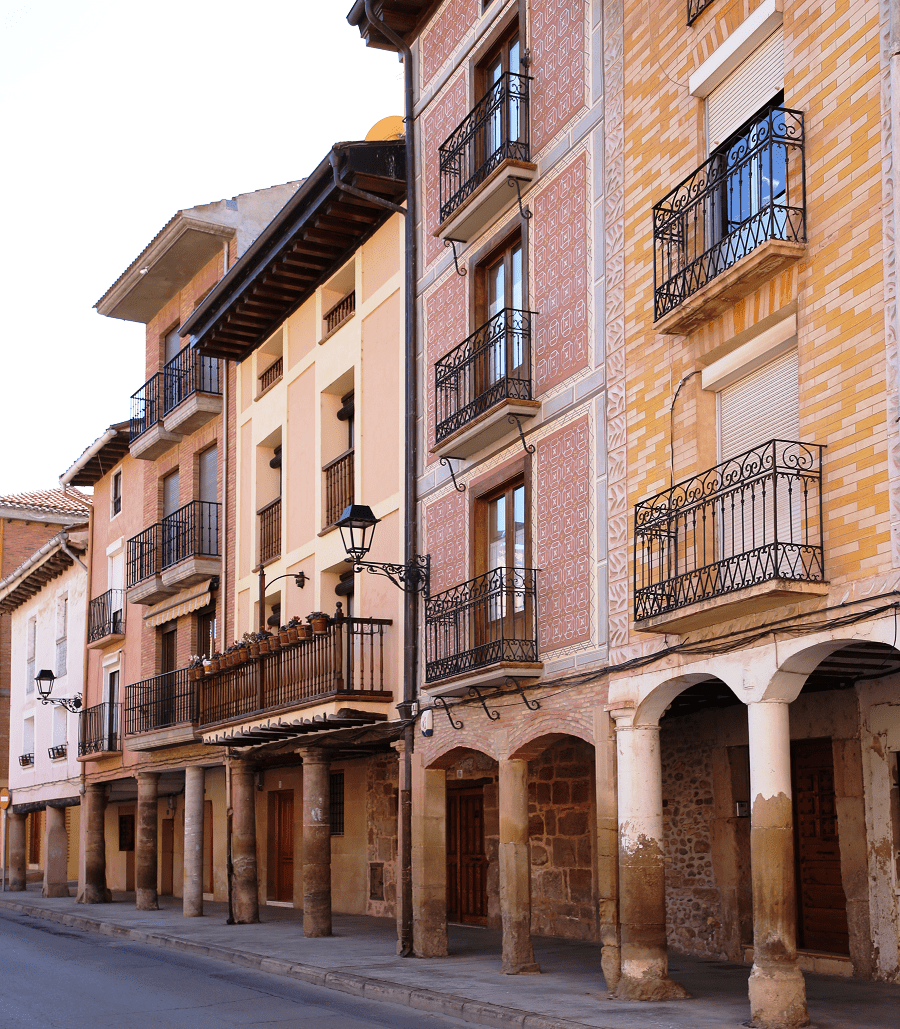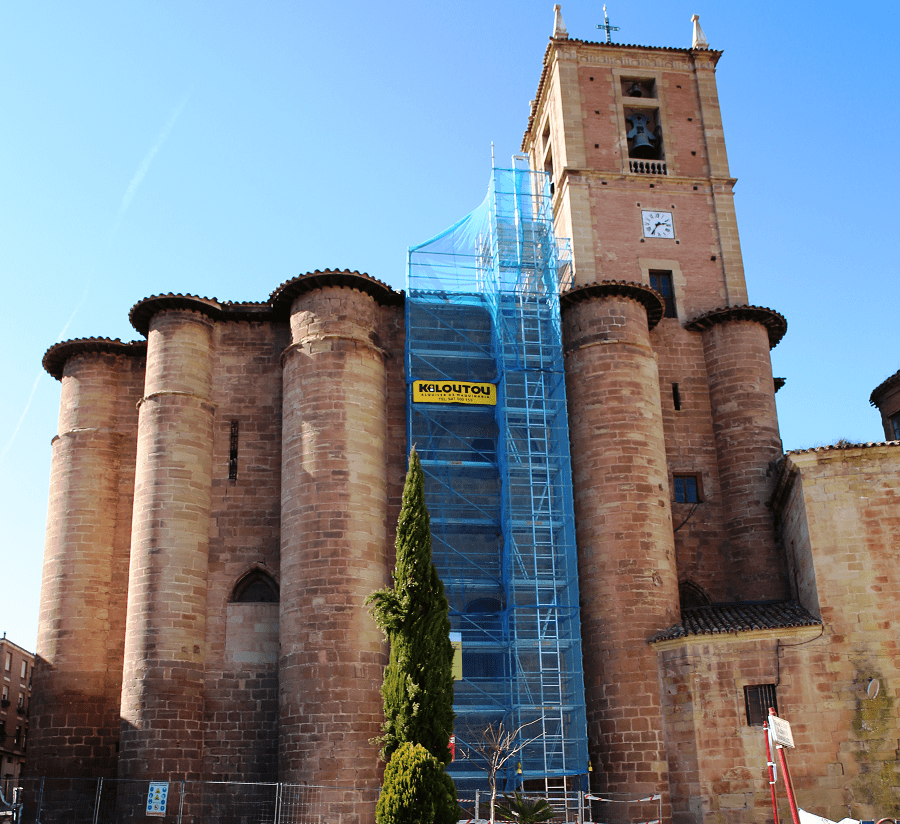Nájera is a town and municipality in the autonomous community of La Rioja, Spain. Crossed by the Najerilla River and located in the region of La Rioja Alta.
Main attractions
Santa María la Real is a monastery, originally a royal foundation, it was ceded by Alfonso VI to the Cluniac order. It was an important pilgrimage stop on the Camino de Santiago. It is particularly well known for the woodwork in the choir of the church.
The first construction on the site dates back to the 11th century. Santa Maria la Real and the attached royal pantheon were founded by King García Sánchez III of Navarre in 1052. It was later elevated to an episcopal see and placed under Papal authority.
In 1076 the kingdom of Navarre passed into the hands of Alfonso VI of León and Castile. The Mozarabic Rite (sometimes called the Isidorean or Spanish Rite) was replaced with the Latin Rite. The Missal of Silos, a Mozarabic missal which is the oldest known Western manuscript on paper, was created in the monastery in the 11th century.
Church of the Holy Cross. The proper denomination is Real Capilla y Parroquia de la Santa Cruz. Declared a national historical-artistic monument, by virtue of Royal Decree 2882/1983 of September 21 (B.O.E. of 17-XI-1983).
The primitive parish of Santa Cruz was founded in 1052 and was located in a chapel within the monastery of Santa María La Real until its separation in 1230 by a decree of Pope Honorius III. The present church was consecrated in 1611.
The architect Juan de Raona attached a hemispherical dome to it on pendentives, topped by a lantern with four windows. In 1936 and 1939 it suffered serious damage, being rebuilt in 1940. The temple is a solid stone construction and consists of three naves, with several neoclassical altarpieces and various carvings and canvases. In the sacristy, a Gothic Christ from the 13th century stands out, and other carvings, canvases and liturgical clothing from the 14th, 16th and 17th centuries are also kept.
It is the headquarters of the Brotherhood of Santa Vera Cruz de Nájera, the only brotherhood that processions in Nájera during Holy Week.
Convent of Santa Elena (Clarisas convent). It was built in the middle of the 16th century by order of Doña Aldonza Manrique de Lara, daughter of Pedro Manrique III de Lara, first Duke of Nájera, although the oldest remains that are preserved are from the beginning of the 17th century.
Chapel of the Mother of God. Located next to the convent of Santa Elena, it was built by Rodrigo Jiménez de Cabredo as a burial place for him and his family.
Mota Castle. Of Muslim origin. It was located on the hill of la Mota. It was conquered in 923 by Sancho Garcés I, in collaboration with Ordoño II of León. The castle played an important role during the battle of Nájera. In the middle of the 17th century the castle was already in ruins and today only the moat and a wall remain.
Alcazar. The fortress was located between the castle and the town. It was probably built at the same time as the castle. In addition to being a defensive element, it served as a royal residence and ducal palace. It was abandoned at the end of the 16th century. In the present century excavations are being carried out that have brought to light abundant remains, among them interesting mosaics.
Najerillense Museum: collections of Archaeology, Ethnography and Art.
How to get to?
From Logroño 26 min (28.5 km) via A-12
From Madrid 3 hr 33 min (335 km) via A-1
Main information
Area: 37 km² (municipality)
Coordinates: 42°24′57″N 2°44′03″W
Population: 8060
Languages: Spanish
Currency: Euro
Visa: Schengen
Time: Central European UTC +1















